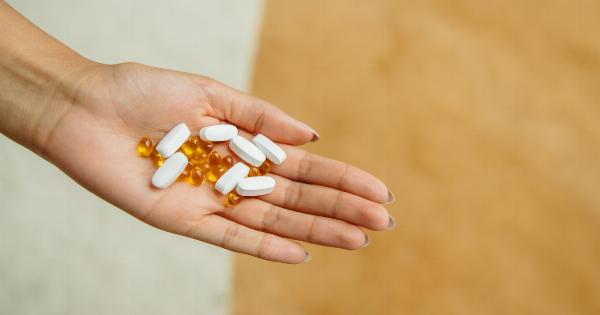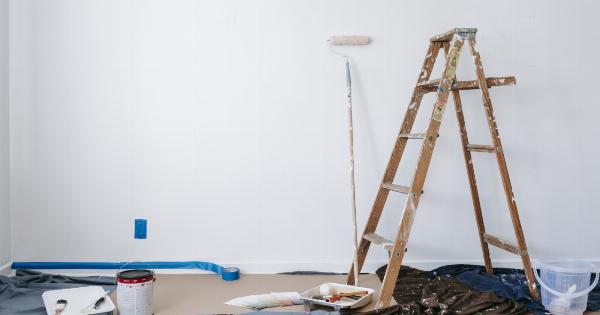Waist pain is a common complaint that affects people of all ages and lifestyles. It can be caused by a variety of factors, such as muscle strain, poor posture, or underlying medical conditions.
Regardless of the cause, waist pain can significantly impact your daily life and overall well-being. While medical interventions can provide relief, there are also several non-medical solutions that you can try. In this article, we will explore ten effective strategies to alleviate waist pain and improve your quality of life.
1. Correct Your Posture
One of the most common causes of waist pain is poor posture. Sitting or standing with slouched shoulders and a rounded back can put excessive pressure on your waist, leading to discomfort.
To relieve waist pain and prevent it from recurring, it is essential to practice good posture. Maintain a straight back with your shoulders relaxed and aligned. Consider using ergonomic chairs and back supports to promote correct spinal alignment.
2. Stretch Regularly
Regular stretching can help alleviate waist pain by improving flexibility and reducing muscle tension. Incorporate stretches that target the muscles surrounding your waist, such as the hip flexors and lower back.
Stretching exercises like standing hip circles, seated spinal twists, and lower back extensions can provide significant relief. Consult with a physical therapist or an exercise professional to learn proper stretching techniques for waist pain relief.
3. Strengthen Your Core
A weak core can exacerbate waist pain as it fails to provide adequate support to your spine. Strengthening your core muscles through targeted exercises can help alleviate waist pain and prevent future episodes.
Pilates and yoga are excellent options for improving core strength and stability. Incorporate exercises like planks, bird dogs, and pelvic tilts into your workout routine to strengthen the muscles in your abdomen and lower back.
4. Maintain a Healthy Weight
Carrying excess weight can put undue stress on your waist, leading to increased pain and discomfort. If you are overweight or obese, losing weight can significantly reduce waist pain.
Focus on adopting a well-balanced diet that includes plenty of fresh fruits, vegetables, lean proteins, and whole grains. Combine a healthy diet with regular exercise to achieve and maintain a healthy weight, thus reducing the strain on your waist.
5. Use Heat or Cold Therapy
Heat and cold therapies can provide temporary relief for waist pain. Applying a warm compress or taking a hot bath can help relax tight muscles and improve blood flow to the affected area.
Cold therapy, such as using an ice pack or frozen gel pack, can help alleviate inflammation and numb the pain. Remember to wrap the cold pack in a cloth or towel before applying it directly to your skin to prevent ice burn.
6. Improve Your Sleep Habits
Poor sleep can contribute to waist pain, as inadequate rest hinders your body’s ability to repair and recover. Invest in a supportive mattress and pillow that promote proper spinal alignment.
Adopt a consistent sleep routine and create a sleep-friendly environment by keeping your bedroom dark, quiet, and at a comfortable temperature. Avoid using electronic devices before bed and practice relaxation techniques to enhance sleep quality.
7. Avoid Prolonged Sitting or Standing
Sitting or standing for extended periods can strain your waist, leading to pain and discomfort. Take regular breaks to change positions and move around throughout the day.
If your job involves prolonged sitting, consider using a standing desk or adjustable workstation to alternate between sitting and standing. When standing, use a footrest and place one foot on a small stool to alleviate pressure on your waist.
8. Practice Mindfulness and Stress Reduction Techniques
Stress and anxiety can contribute to muscle tension, exacerbating waist pain. Incorporating mindfulness and stress reduction techniques into your daily routine can help alleviate waist pain.
Meditation, deep breathing exercises, and yoga are effective strategies to promote relaxation and reduce stress levels. Engaging in activities that you enjoy and spending time with loved ones can also help alleviate stress and provide a positive impact on your overall well-being.
9. Wear Proper Footwear
The shoes you wear can affect your posture and subsequently contribute to waist pain. Avoid high heels or footwear that lacks proper support, as they can throw off your balance and alignment.
Opt for comfortable shoes with adequate arch support and cushioning. Custom orthotic inserts can also provide additional support and help alleviate waist pain caused by poor foot mechanics.
10. Seek Physical Therapy
If your waist pain persists or worsens despite trying non-medical solutions, it may be time to seek the help of a physical therapist.
A physical therapist can assess your condition, identify contributing factors, and create a personalized treatment plan. They may use techniques such as manual therapy, targeted exercises, and modalities like ultrasound or electrical stimulation to help relieve waist pain and promote long-term recovery.






























